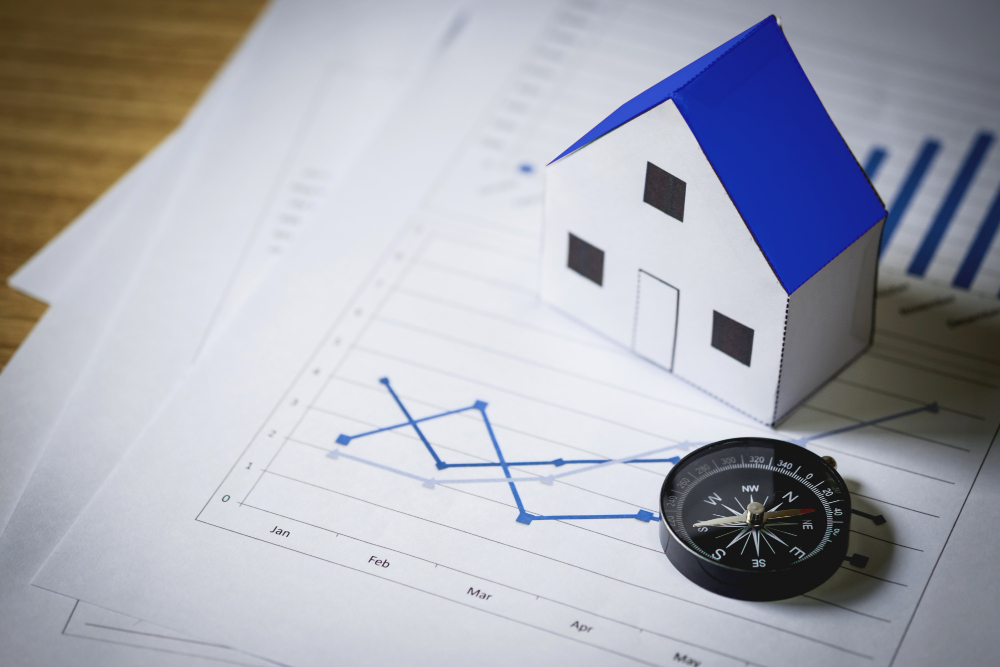Real Estate Data Analytics 101 (Guidance, Tips, & Tricks)
Staying competitive in the real estate business means knowing how to answer any questions about real estate value, from the number of electric vehicle charging stations in an area to where visitors in the community spend the majority of these days. Precise real estate data analytics empowers real estate professionals with the knowledge they need to provide the best advice to their clients.
Table of Contents
Modern real estate data analytics goes beyond the simple data of your predecessors and employs the kinds of big data and techniques that make a big difference to clients. By investing in a good web scraper, you can simplify real estate data analytics, automating the most arduous aspects of the process so you can spend your time finding ways to creatively leverage the information you uncover.
Why Should You Use Data Analytics in Real Estate?

Real estate data analysts take big data and make that data relevant to property buyers and sellers. There’s a reason this is a high-paying job: using real estate data analytics can bolster real estate success exponentially.
The key to making this work is understanding why residential and commercial real estate clients care about this level of precision.
Residential real estate data analytics
It’s one thing to sell a home to a client that meets their current needs. It’s something else to be able to locate a property that will continue to meet their needs down the road. Residential real estate data analytics empowers you to do the latter. It helps you stand out as a residential real estate expert and ensures your clients remember your name.
Commercial real estate data analytics
Real estate data analytics have an even greater role to play when it comes to commercial real estate properties. Analysis of local competitors, favorite haunts, and traffic flow can all inform real estate investors, helping them make the right choice for their needs and develop their property accordingly.
How To Do Big Data Analytics for Real Estate

Understanding why you should use real estate data analytics is very different from understanding how to make it happen. Unless you’re already a real estate data analyst, transitioning from the “why” to the “how” can feel like a big task. Luckily, there are tools to help you perform real estate data collection. Let’s take a closer look.
What is real data, and why should you prioritize real estate data collection using proxies?
When it comes to online data collection, the term “real data” refers to operational data that comes from real-world sources like vendors, production systems, or public records. In today’s fast-paced world, there is a lot of real data to work with.
But while this real data is often publicly available, it can also be difficult to comb through. Imagine how much time and effort it would take to track down the number of people who have put in to-go orders in a certain neighborhood in the past six months, for example. Vendors have this information, but contacting each vendor, collecting the data manually, and then adding it up by hand would take time that most people don’t have.
Web scraping allows you to collect significant amounts of data quickly without doing everything manually. But when you try to scrape large swathes of data, your scraper will likely be recognized by servers and banned. Web scraping is legal, but some sites discourage the practice. That’s where using proxies comes in.
Proxies work by concealing your IP address, allowing you to scrape large batches of data at a time without revealing your location. This makes your online interactions safer while reducing the chances that your activities will be blocked based on your geographic location.
Setting up a proxy is a key first step to performing web scraping. Without a proxy, you’re much more likely to get blocked mid-scrape, preventing you from gathering the up-to-date information you need. The benefits of collecting data using a proxy are worth the extra effort.
How do you perform real estate data collection using scraping software?
There are several ways to scrape data from local websites. One of the most common ways is to manually scrape data using a coding language like Python. To do this, you need to go onto the web page you’re trying to scrape, view the page source, and then use a program like Selenium to identify the information you want to scrape, write the code, and scrape the data.
This can be a lengthy process, and it becomes more complicated when you consider systems like IP blocking at CAPTCHAs, which are specifically designed to prevent web scraping. Proxies can overcome some of these hurdles so you don’t have to rotate IP addresses continuously, but scraping too frequently can strain servers. And if you’re working with a dynamic website that leans heavily on JavaScript or AJAX, you may need to learn advanced techniques to collect all the data you need.
A more time-effective option is investing in prebuilt scraping software like Scraping Robot. Scraping Robot helps you collect data from public sources and organizes it for you. Instead of learning how to write programs for proxies, manage errors, and break through CAPTCHAs, Scraping Robot allows you to only focus on determining the type of data you’re looking for. Scraping Robot can also help you collect real estate data using proxies. It handles proxy management for you, so that’s just one less thing for you to worry about.
All you need to do is determine which data you’re looking for. The scraper automates the process, reducing labor hours while giving you accurate results in real time.
Cleaning data to use for real estate
Once you’ve determined the best datasets to track for real estate and found a way to scrape that data, the next challenge is cleaning it and putting it into a usable format. Any time you scrape data online, whether manually or using a tool like Scraping Robot, you’ll find you have more information than you need.
Start by eliminating duplicate information and removing errors. Then, work on formatting your information so that it’s in a usable spreadsheet format. Once you have a working spreadsheet, you can begin making charts, infographics, or diagrams to display the information in a digestible manner.
Leveraging Real Estate Data Analytics

Part of real estate data analytics is knowing how to leverage that data to bolster your real estate business. After all, scraping big data does you no good if the data just sits in a folder on your desktop.
Finding good datasets for data analysis in real estate comes down to knowing how you’re going to use the information. This means that you should consider how you plan to use your real estate data before determining which datasets you will target. Then, focus on the datasets that best support your real estate goals.
Using real estate data analytics to promote your properties
One popular way to use real estate data analytics is to promote the properties you’re trying to sell.
For example, you might mention some of the information you collected when advertising an open house. Consider the difference between these two ads:
- Ad 1: Come to an open house tonight! 2BR 1BA ranch house in a friendly neighborhood!
- Ad 2: Come to an open house tonight! 2BR 1 BA ranch house. 71% of the people in this quiet, friendly neighborhood are over the age of 55. Could this be your dream retirement home?
The first advertisement is generic. Anyone could attend the open house without knowing what to expect when they arrive.
The second advertisement uses specific demographic data to help target a niche subset of buyers. This may mean fewer people come to the open house, but those who do will be in your target demographic. They’re much more likely to put an offer in on the house and may be willing to pay more because they now know valuable information about the neighborhood.
The person who ultimately purchases the house knows what they’re investing in, so they are likely to be more satisfied with their purchase and recommend you to family and friends.
Using real estate data analytics to help clients find the right property
Using big data to help clients find the perfect property, even if it’s not one of your listings, can be just as useful as advertising your properties.
Your clients look to you for expert advice. Retaining clients comes down to being able to provide better advice than other real estate agents in your area.
Consider, for example, a corporate real estate agent trying to help a client find the right property to open an Italian restaurant in. Leveraging real estate data analytics in this case might mean looking for information like:
- The number of restaurants in an area
- The median income of residents in an area
- The amount of money residents generally spend when they go out to dinner
- The number of people who go out to dinner in that area in a given night
- Whether or not foot traffic is impacted by tourism or local events
Final Thoughts

Real estate data analytics can significantly boost your real estate business. The right analytics help you advertise more effectively and provide more value to your clients. This added value leads to better-satisfied clients, better reviews, and more repeat customers.
Web scraping tools help you gather real estate data in real time to give your clients the most valuable, up-to-date information on properties. Try out Scraping Robot today to collect the data you need to improve your real estate business.
The information contained within this article, including information posted by official staff, guest-submitted material, message board postings, or other third-party material is presented solely for the purposes of education and furtherance of the knowledge of the reader. All trademarks used in this publication are hereby acknowledged as the property of their respective owners.
